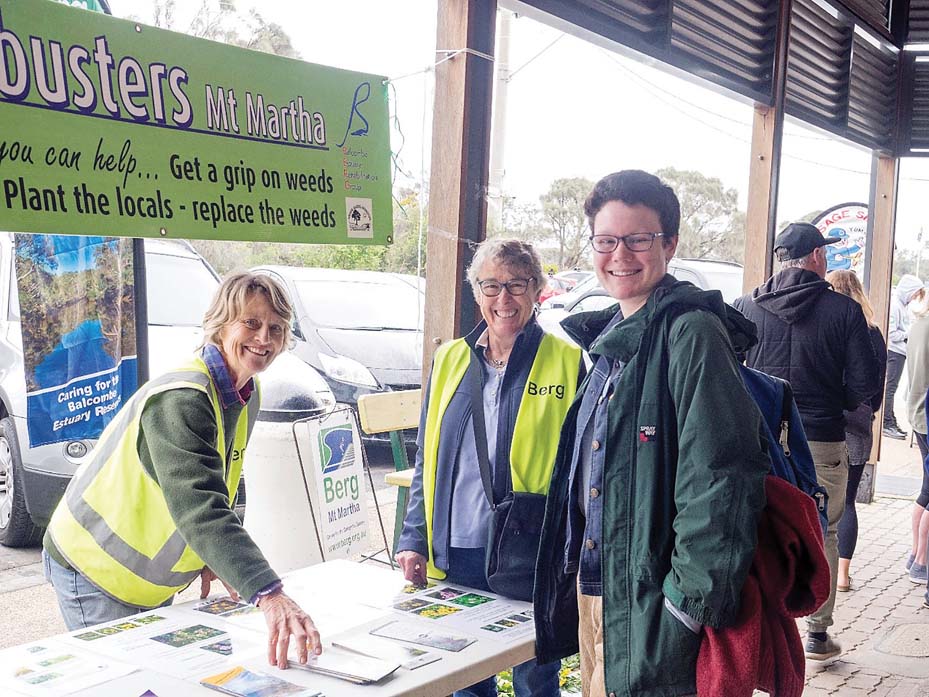
By Patricia MacLeod
IT’S easy to let the grass grow under your feet, but Mt Martha residents are being encouraged to nip weed infestations in the bud.
Environmental groups BERG MM and Sunshine Reserve Conservation and Fireguard Group recently held the annual Weedbusters stall at the Mt Martha shops to provide information on the damage caused by and offer advice on combating infestations.
BERG MM volunteer Sue Betheras said it was an opportunity to raise awareness of weeds “growing furiously at this time of year”.
“People stop to look at the display of common weeds and ask questions. Volunteers give advice on plant identification and appropriate methods of controlling particular weeds,” Ms Betheras said.
“BERG and the Sunshine Reserve group run the Weedbusters stall to raise community awareness of the importance of our environment.”
The event also lets the public to find out about BERG’s role in caring for Balcombe Estuary and reserves.
“BERG volunteers and shire contractors remove or control weeds that are the most invasive and will do the most damage to the ecology of the estuary and reserves,” Ms Betheras said
“Examples of weeds we remove are myrtle-leaf milkwort, rock rose, angled onion, winter cherry, and boneseed.”
Taking out weeds provided space for the natural regeneration of indigenous grasses, reeds, rushes, shrubs and trees.
“Removing weeds preserves the biodiversity of the estuary and reserves, and provides healthy habitat for birds, reptiles, echidnas, possums, bats, fish, and insects,” Ms Betheras said.
“Scrambling weeds such as bridal creeper, cape ivy, dolichos pea and blackberry need regular management to prevent them from smothering indigenous plants.
“People who live nearby a reserve can prevent weed species from jumping the fence by removing seed heads of plants such as agapanthus, forget-me-nots and freesias, and by planting indigenous species along fence lines adjoining reserves.”
Residents could also keep invasive species under control on their own properties, and on road verges.
“This reduces runoff, as after rain seed and plant material flows into storm water drains and ends up in creeks or the foreshore.”
Common weeds included arum lily, panic veldt grass, sweet vernal grass, kikuya grass, and oxalis, which is almost impossible to eliminate.
Many weeds may not be immediately obvious as some have attractive flowers and the appearance of native flora, like flax-leaf broom.
“Locals can familiarise themselves with common weeds and replace them with a variety of indigenous plants suited to gardens,” Ms Betheras said.
“Flowering native spring bushes include the silky Guinea-flower, a small bush with yellow flowers, and Australian Indigo which has lavender flowers. Sea Box has shiny green leaves, white flowers, red berries, and is common on the foreshore.
“Sweet bursaria and coast beard heath are small trees with white flowers that attract insects and birds.”
First published in the Mornington News – 15 October 2019

